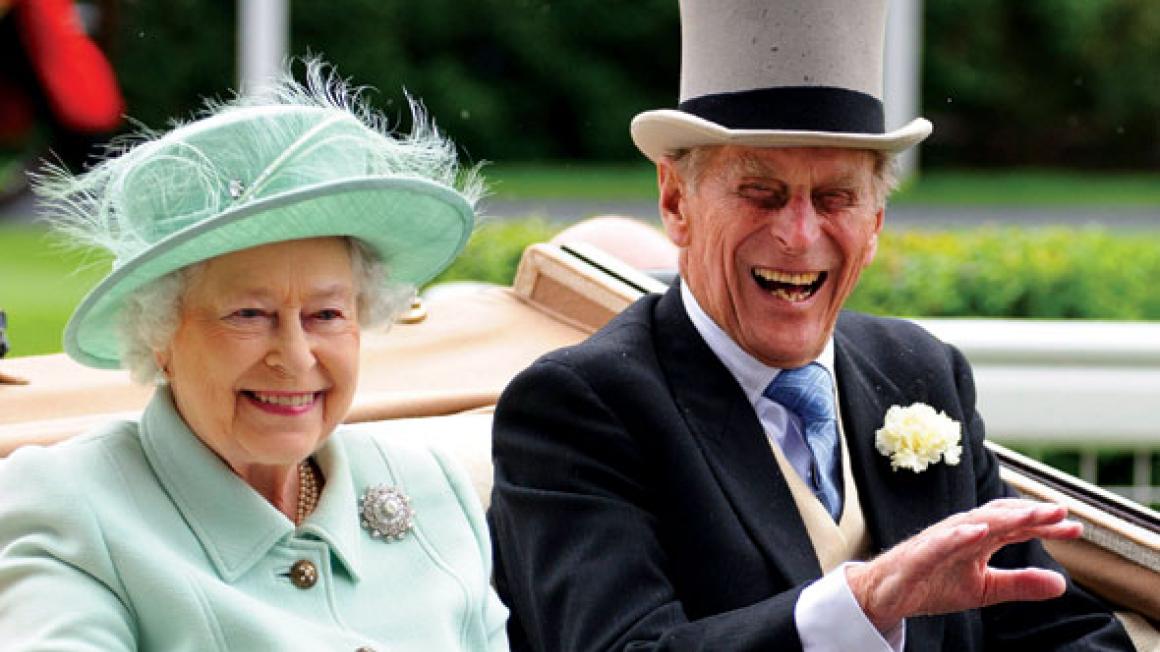How the Royals learnt to smile
20 years after their ‘Annus Horribilis’, the Royals are beaming like never before. In the economic gloom, perhaps it’s time we joined them?
Euro crisis; recession; depressing weather: forget them all. The Queen is smiling. And she is smiling as never before. During the Thames Pageant, she lit up and danced along to The Sailor’s Hornpipe. In her magnificent gold dress at the Jubilee concert, accompanied by Gary Barlow, she was beaming and radiant. The week before last, at Vernon Park in Basford, the crowd surged forward as the Duke of Cambridge left the podium to start a children’s race. The Queen, wreathed in smiles, held out her hands in mock despair: ‘It’s all very well, but I can’t see a thing,’ she quipped.
And at Royal Ascot, there she was again, giving a shy, sweet, girlish smile to the Duke of Edinburgh when he presented her with the trophy after her horse, Estimate, won the Queen’s Vase.
The Queen has always smiled, of course. It is a wonderful smile that transforms her completely. It can express many things: delight, kindness, mischief, gratitude, tolerance, gentle ribbing.
There is the famous photograph of her on board Britannia, leaning over the side in a print summer dress, completely given up to joy. That was taken 40 years ago. But somehow this sense of fun and happiness didn’t quite come across to her subjects. Rather it was her mother, the late Queen Mother, who was known for her effortless and, more importantly, authentic smiles.
Indeed, back then, the Queen Mother even teased her daughter about her solemnity. Once, while offering wine at lunchtime, the Queen Mother quipped to the Queen, ‘Don’t forget, darling. You have to reign all afternoon.’
In the public mind, our idea of the Queen for many years was best summed up by the lady herself. ‘Oh look, I’ve got my Miss Piggy face on,’ she said, watching TV and commenting on one of her own especially glum moments.
New summer arrivals at Balmoral, drawing up in the fine Scotch drizzle, would be mystified by the bizarre sight of a small, macintoshed figure crouched under an umbrella, grimly picnicking on the front lawn. ‘That’s the Queen. She likes picnicking in the rain,’ they would be informed.
The Queen’s humorous side was largely kept out of view, not least by her ferocious press secretary, Commander Colville, inherited from her father and in post until 1968. Known as the Abominable Noman, he ruthlessly quashed any attempts by the Press to show the Queen as even remotely human. This, combined with the undue deference of the age and the absurd convention that it was bad manners to repeat any impromptu remarks of the Queen, meant that, for many years, the sovereign remained a remote and rather stiff figure.
In truth, there was often another explanation for the solemn and even furious face. In the 1960s, there was a meeting of the Privy Council and all the Councillors somehow found themselves kneeling on the wrong side of the room. Rather than getting up and walking across, they elected to shuffle on their knees, while the Queen glared at them. Afterwards she said, ‘I was trying not to laugh.’
Other delightful moments simply were not mentioned. In the 1980s, departing from the Victoria Tower after the State Opening of Parliament, she said to Garter King of Arms, ‘I loved the great biff you gave the Lord Chancellor,’ referring to an inattentive Lord Havers, then Lord Chancellor, who had to be whacked by Garter to get the procession moving at the start of the ceremony.
The 1990s certainly didn’t give the Royals much cause for cheer, particularly during the Queen’s ‘Annus Horribilis’ of 1992 (when Prince Andrew and his wife separated, Princess Anne divorced and Diana’s explosive memoir was published) and the public’s negative reaction to the monarch following Diana’s death in 1997. Certainly, there was a conscious attempt by the Palace to re-brand the monarchy after these darkest of days. But at first it didn’t work. The Queen having tea in a Glasgow council flat looked like a marketing ploy.
But the Diamond Jubilee has marked the reincarnation of the monarchy and the Royal Family, led by the Queen, has won back the affection and respect of the Nation. But how? Was it simply a matter of staging all these village-fete-style Jubilee events and reducing the dignitaries and gold chains to a minimum? No. The secret of the Queen’s infectious new smile is that she means it. She has found the freedom to be herself.
William and Kate have been an enormous boost as well, of course, with their broad smiles, High Street clothes and willingness to throw foam javelins and stir saucepans. The cheerful new Prince of Wales, also, is quite transformed, especially after his masterly speech at the end of the Jubilee concert. And how much we like his jolly, friendly wife. The Duke of Edinburgh, too, is less about clumsy gaffes than sincere good humour and easy charm.
And it is doing us all good. The year 2012 won’t be remembered as a year of good news, but, with the Royal Family leading from the front, there certainly won’t be a shortage of smiles.
In fact, as the rain lashes down and the economy goes into meltdown, it could well be the year that the Royals teach us that laughter – or at least a smile – really is the best medicine


